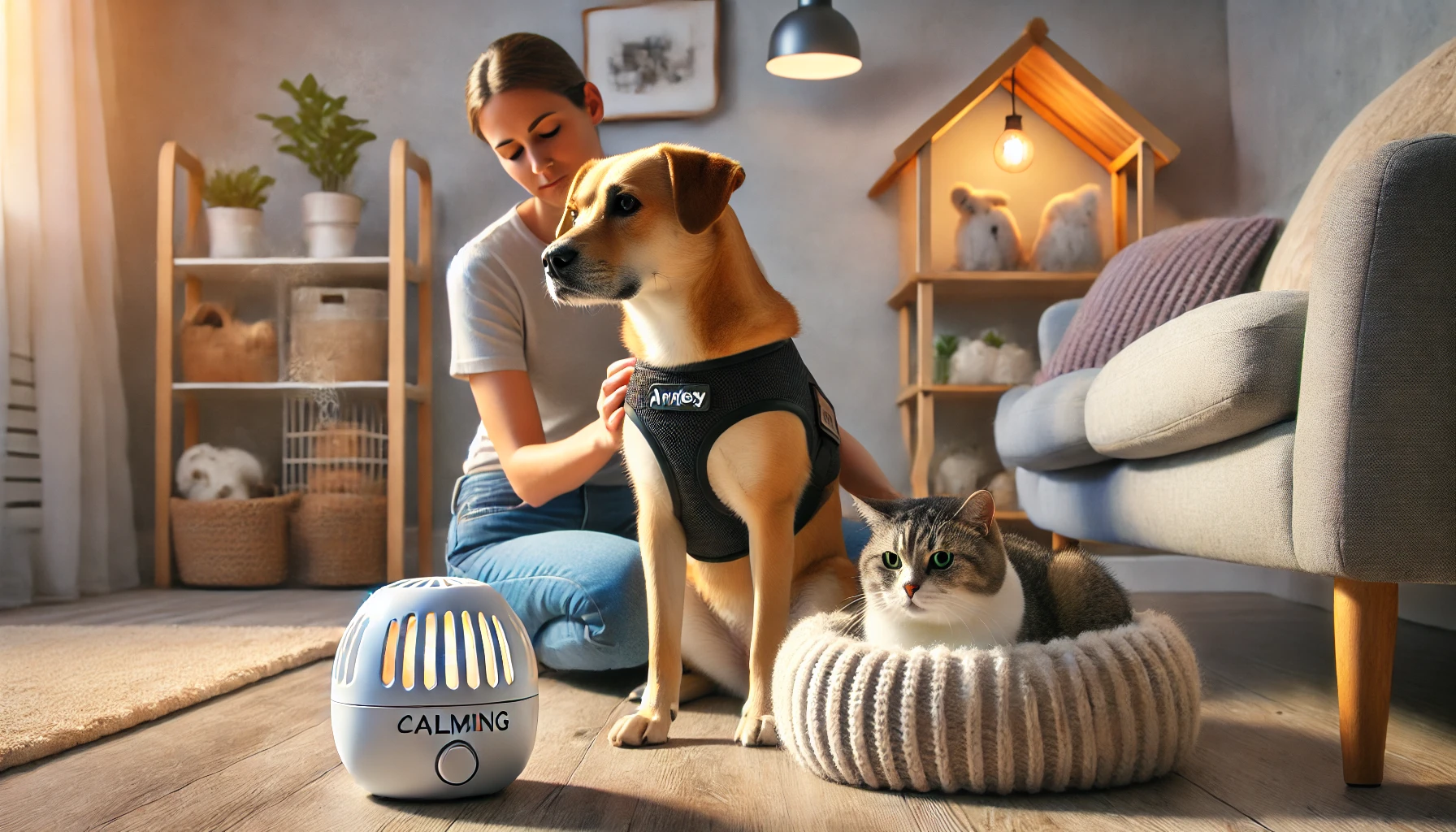Anxiety in pets is a common issue that can significantly impact their behavior, health, and overall well-being. Whether caused by environmental changes, separation, or past trauma, understanding and addressing anxiety is crucial for maintaining a happy and balanced relationship with your furry friend. Here’s a comprehensive guide to recognizing and managing anxiety in pets.
Understanding Pet Anxiety
Anxiety in pets is often triggered by situations or experiences that make them feel unsafe or uncertain.
Common Causes of Anxiety
- Separation: Being left alone or away from their owner for extended periods.
- Loud Noises: Fireworks, thunderstorms, or construction sounds.
- Changes in Environment: Moving to a new home, introducing new pets, or rearranging furniture.
- Trauma: Previous abuse, neglect, or abandonment can lead to long-term anxiety.
- Health Issues: Pain or discomfort from illnesses can make pets feel stressed.
Recognizing Signs of Anxiety
Pets may display anxiety differently based on their personality and the severity of the stress.
Physical Signs
- Excessive panting, drooling, or trembling.
- Dilated pupils or frequent blinking.
- Pacing or inability to settle.
Behavioral Signs
- Aggression: Growling, snapping, or hissing.
- Destructive behavior: Chewing furniture, scratching doors, or digging.
- Avoidance: Hiding, refusing to eat, or avoiding interaction.
- Excessive grooming: Over-licking or biting their skin, often leading to bald spots.
Vocalization
- Dogs: Excessive barking, whining, or howling.
- Cats: Yowling, meowing, or hissing more than usual.
Subtle Indicators
- Changes in appetite or sleeping patterns.
- Over-attachment or following you around excessively.
How to Manage Anxiety in Pets
Addressing pet anxiety requires understanding their triggers and using strategies tailored to their specific needs.
Create a Safe Space
Providing a secure, quiet area helps pets feel calm during stressful situations.
- Use a crate, bed, or room they associate with comfort.
- Add familiar items like their favorite toy, blanket, or your clothing with your scent.
Use Calming Aids
Several products are designed to reduce anxiety in pets.
- Pheromone Diffusers: Mimic natural calming scents that help pets relax.
- Anxiety Wraps or Vests: Provide gentle pressure, similar to a hug, to comfort pets.
- Natural Remedies: Herbal supplements, such as valerian root or chamomile, may help soothe anxiety.
Establish a Routine
Consistency in daily activities can reduce uncertainty and anxiety.
- Feed and walk your pet at the same times each day.
- Create a predictable bedtime routine to promote relaxation.
Gradual Exposure and Desensitization
If specific triggers cause anxiety, slowly expose your pet to them in a controlled environment.
- Loud Noises: Play recordings of thunderstorms or fireworks at a low volume while rewarding calm behavior. Gradually increase the volume over time.
- Separation: Practice leaving your pet alone for short periods, gradually increasing the time.
Provide Mental and Physical Stimulation
Engaging your pet’s mind and body can reduce anxiety.
- Interactive Toys: Use puzzle feeders or treat-dispensing toys to distract and entertain.
- Exercise: Regular walks, playtime, or training sessions help release pent-up energy.
Stay Calm
Pets often mirror their owner’s emotions.
- Speak in a soothing tone and avoid showing frustration.
- Maintain a relaxed demeanor during stressful situations to reassure your pet.
Use Positive Reinforcement
Reward desired behaviors to build confidence and reduce anxiety.
- Offer treats, praise, or play when your pet remains calm in situations that previously caused stress.
- Avoid punishing anxious behavior, as it may worsen their fear.
Professional Help
If anxiety persists despite your efforts, consult a professional.
Veterinarian
- Rule out underlying health issues contributing to anxiety.
- Discuss medications or supplements for severe cases, such as anti-anxiety drugs or calming chews.
Animal Behaviorist
- Behaviorists can identify specific triggers and create a tailored plan to address anxiety.
- They use techniques like counter-conditioning to replace fearful responses with positive associations.
Managing Specific Types of Anxiety
Separation Anxiety
Pets with separation anxiety struggle when left alone.
- Leave an item with your scent, like a T-shirt, to comfort them.
- Use interactive toys or calming music to keep them occupied while you’re away.
Noise Anxiety
Loud noises can overwhelm pets, especially during thunderstorms or fireworks.
- Close windows and curtains to reduce the intensity of sounds and light flashes.
- Play white noise or calming music to drown out external noises.
Social Anxiety
Some pets feel anxious around strangers or other animals.
- Arrange controlled introductions with new people or pets.
- Use treats and praise to create positive experiences during social interactions.
Preventing Anxiety in Pets
Taking proactive steps can prevent anxiety from developing or worsening.
- Early Socialization: Introduce your pet to various people, animals, and environments while they’re young.
- Positive Reinforcement Training: Build your pet’s confidence by rewarding good behavior.
- Regular Check-Ups: Monitor your pet’s health to address any issues that may contribute to anxiety.
Conclusion
Managing pet anxiety takes patience, understanding, and consistent effort. By recognizing the signs and implementing tailored strategies, you can help your furry friend feel secure and confident. Whether through creating a safe environment, using calming aids, or seeking professional guidance, your support makes a world of difference in their well-being. With love and care, you can guide your pet toward a happier, less stressful life.

